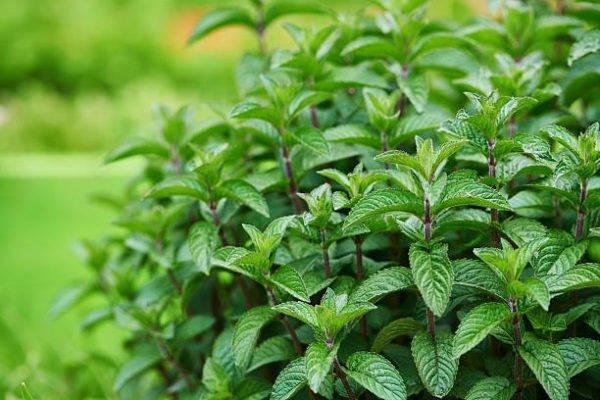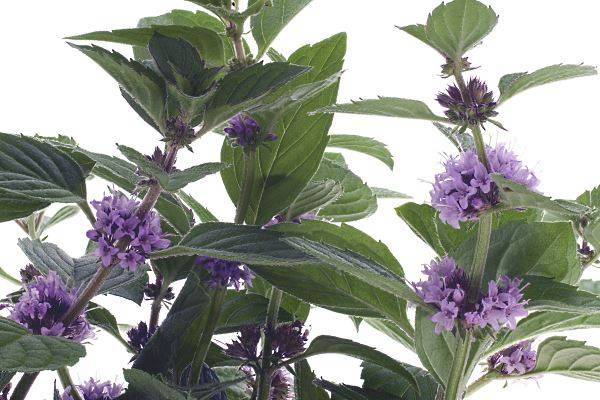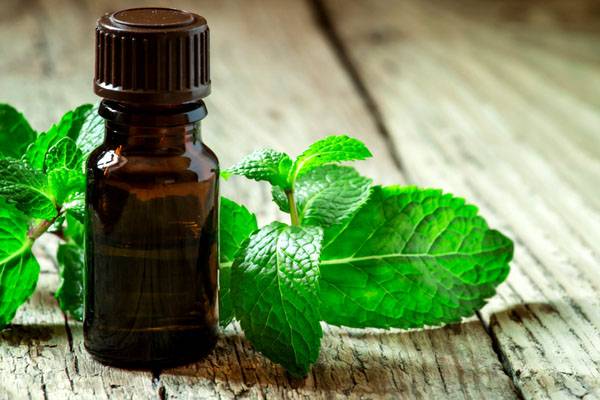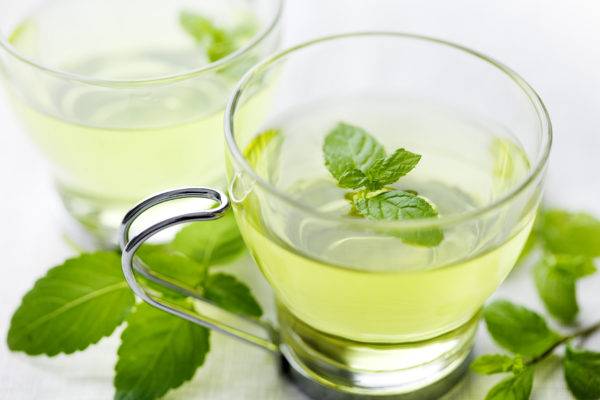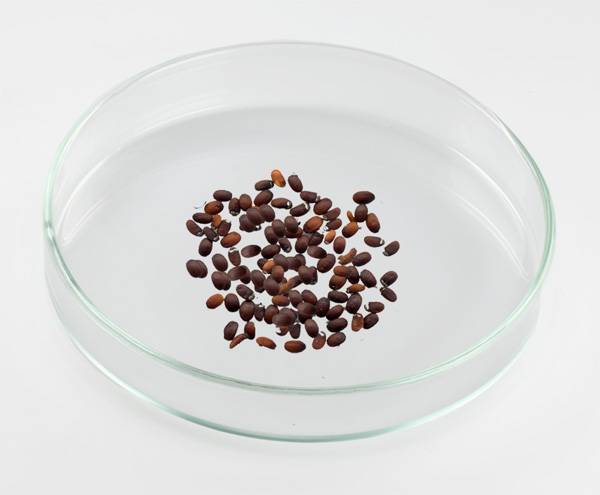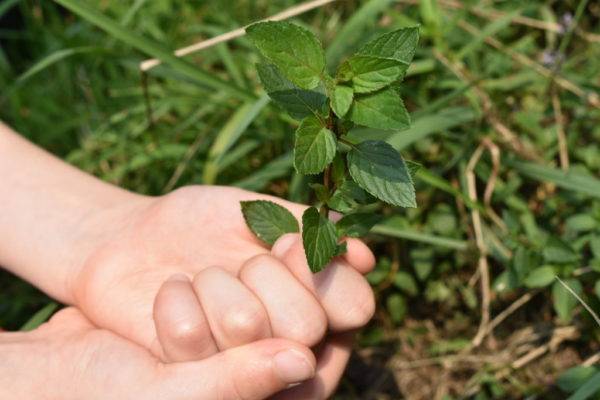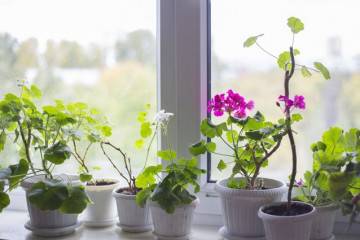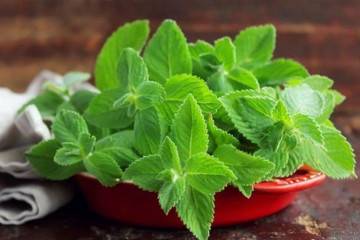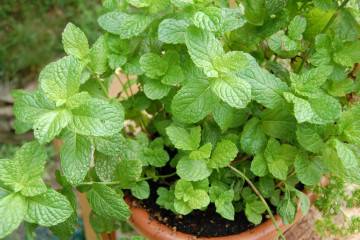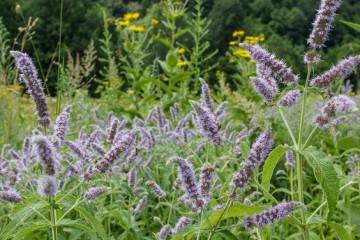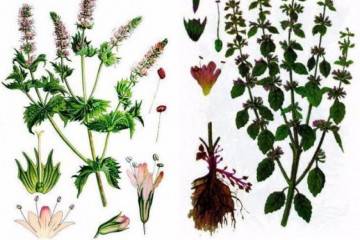Peppermint (Mentha Piperita) - plant description
Content:
Peppermint has been known since ancient times and was used by the ancient Greeks, Egyptians and Romans as a medicinal and herb. On Russian territory, it became widespread after 1895, when it was imported from England. Now grown as an essential oil and medicinal plant.
Peppermint (mentha piperita) - what is this plant
Represents the peppermint of the Lamiaceae family. It is a perennial and reaches a height of up to 1 m. The description of mint says that the plant has:
- the root system consists of many thin ramifications. The roots are located shallow in the soil in a horizontal position;
- the central trunk with opposite lateral branches of the tetrahedral type, the apex is a complex spike-shaped inflorescence. Shoots begin to grow from the base of the stem;
- foliage is a simple dark green shade of different sizes. On the main branches and trunk, they are large, on additional ones, they are smaller. Leaves with short petioles, sharp denticles; pinpoint glands and sparse hairs are visible on the blades.
What is mint is familiar to everyone, but what its fruits look like, many find it difficult to answer. These are reddish brown nuts with one seed.
Medicinal properties, harm and benefits of use
Mentha Piperita in translation sounds like "peppermint". Among the generally accepted names, the most famous are cold or English mint, cold mint. The beneficial qualities of the plant are associated with the following actions:
- local anesthesia. Menthol activates receptors on the skin that are responsible for the perception of cold, causing a slight tingling sensation and coolness. Small vessels located in the upper layers of the skin respond to the receptor reaction. There is their narrowing, a decrease in the rate of blood circulation and suppression of painful sensations;
- an increase in the lumen of blood vessels occurs simultaneously with a narrowing of the skin capillaries. Expansion leads to a decrease in blood pressure, relief of heart pain;
- normalization of the digestive tract. Internal use of the medicinal herb provokes irritation of the mucous membranes of the stomach and intestines, acceleration of digestion processes. The antiseptic effect additionally suppresses the vital activity of pathogenic microflora in the intestine, activates the work of the gastrointestinal glands.
The constant use of peppermint is undesirable, its excessive amount leads to heartburn, over time, the body stops responding to its active components due to addiction. Possible harm from a medicinal plant:
- with constant use of mint tea for insomnia, it quickly ceases to act;
- can greatly reduce blood pressure;
- in children, the plant provokes allergic reactions.
A contraindication to the use of the plant is considered to be an allergy to the plant, cardiovascular diseases, stomach ulcers, duodenal ulcers.
Other uses for peppermint
Peppermint leaves are used in cooking. A small amount of the plant helps:
- give fresh notes to familiar sauces;
- improve the taste of dishes made from poultry and lamb;
- emphasize the aroma of cheese, vegetable soups.
The plant can be used as a fumigator, as many insects cannot tolerate its scent. When planting bushes on a personal plot, you can get rid of unwanted guests in the form of cockroaches, moths and flies. Mint aromatic oils are used to get rid of unpleasant odors and to fight migraines. In many perfumery products there are lines with her scent: Armani, Guerlain, etc.
Peppermint varieties
There are two main types, which differ in the color of the stem and foliage:
- black - with a stem painted in a reddish-brown tint, and a brownish color of the leaves;
- white - has no pronounced pigmentation, shoots and foliage of a uniform green color.
Growing peppermint outdoors
The site should be in a lighted place or partial shade, at a distance of 0.8 m around there should be no flowers, berry bushes or vegetables. If the rules are violated, the mint bushes will not meet the quality criteria.
What time should you plant
Planting operations are carried out in April, and again in early August. Seedlings and cuttings take root better outdoors when planted from 15 to 30 May.
How to care for a plant in the garden
It is not difficult to take care of, the procedures include weeding, watering, loosening the earth and protecting against pests and diseases.
Watering rules and humidity
Watering the culture is carried out in the evening until the bushes are completely engrafted. Weeding and loosening the land is needed immediately after irrigation. Then the frequency of watering is reduced and carried out as needed.
Top dressing and soil quality
Fertilize the soil once a season in spring. The land is fed with wood ash mixed with compost or peat.
Growing mint at home on a windowsill
It is not difficult to grow bushes from seeds. In addition to the window sill, containers with seedlings can be placed on an insulated balcony or loggia. After preparing a mixture consisting of humus, peat and garden soil (all components are taken in equal proportions), it is calcined in the oven.
How to sow and care
Seed material is purchased in a store or used with one's own hand. Small grooves 50 mm deep are made in the soil, seeds are evenly distributed in them. Sprinkle on top with a small amount of earth, the container is covered with plastic wrap to create a greenhouse effect. Then the pot is sent to a warm room with maximum illumination.
The first shoots will appear in 2-3 weeks. If the plants do not have enough light, then you will have to use additional lighting. The best conditions for seedlings are a temperature of 20-25 ° C, when grown in places with a lack of lighting, it decreases to 15-17 ° C.
Plant care is adjusted depending on the growing season:
- during the intensive growth of seedlings, the soil should not be allowed to dry out, drought can provoke the death of the bushes;
- with a lack of water, the risk of attacks by insect pests increases;
- in winter, watering is carried out carefully, since excessive waterlogging is detrimental to peppermint;
- heaters and central heating radiators working nearby dry the air greatly, the plant needs periodic spraying.
How does peppermint bloom?
The plant blooms from the last week of June to the end of August.
Types and shape of flowers
Peppermint flowers are small with a light purple tint. They are collected on the upper part of the plant in spike-like inflorescences. Corollas with pinkish or pale purple color are five-membered and two-lipped.
Peppermint collection rules
In the pharmaceutical industry and alternative medicine, it is customary to use foliage and apices along with inflorescences. The plant shows a gradual accumulation of necessary substances as it grows. The collection is carried out at the end of the growing season. The most important thing is not to miss this moment, since after the leaves have stopped developing, oxidative processes begin in them.
The optimal time to harvest mint is mid-flowering. At this time, half of the plants have just formed buds, and the second is actively blooming. On the backyard, the grass is collected with a sharp cutting tool. When cutting with pruning shears or scissors, care should be taken not to damage the rhizome. New shoots will appear from it next year.
The best harvest time is dry and hot weather. Special attention is paid to dew, it should not be on the plants. After cutting, the raw materials are laid out for drying, after two days it can be threshed (shaking off the leaves from the stems).
Diseases and pests
Common diseases in peppermint include:
- rust. It is one of the most dangerous, develops at low temperatures and high humidity. Fungal infection can appear when there is an overabundance of nitrogenous elements in the ground or violation of the rules of crop rotation. You can determine the infection on the seamy side of the leaf plates, since mustard-colored pads appear on the mint;
- powdery mildew. Affected bushes are covered with a whitish bloom. The disease often occurs in the second half of the season, a cobweb bloom captures the stems and foliage. As a means of preventing the disease, autumn digging of the site is used to a depth of 20 cm. The bushes are sprayed with a 1% solution of colloidal sulfur;
- Verticillium wilt is a fungal infection that turns the foliage on the top of the plant black. As the disease progresses, the bushes die. To prevent its development, experienced gardeners recommend observing the requirements for crop rotation, and burning plant residues in the fall. For beginners, they advise planting varieties of peppermint that are resistant to verticillary wilt;
- anthracnose. It appears as brownish spots on the leaf plates. Treatment consists in sprinkling the bushes with a 1% solution of Bordeaux liquid up to 4 times. Preventive measures consist in digging up the site in the autumn;
- septoria. Infection with spotting causes the appearance of black dots and brown spots (up to 0.8 cm) with dark edging. The only treatment is spraying the bushes with a 1% solution of Bordeaux liquid.
The greatest danger to culture is overgrowth. The disease is provoked by mycoplasmas, stops the growth and development of the plant. The foliage becomes unnatural in color, the formation of the root system slows down. Pathology refers to incurable, in the presence of affected bushes, they are dug up and burned. Healthy plants are transplanted to another site.
Insect pests also threaten peppermint:
- mint flea. It is a small beetle (up to 15 mm) with a yellow color. The result of his activity is round holes gnawed in the foliage. The pest appears in dry and warm weather in spring;
- shield beetle. The green insect gnaws at the edges of the foliage, making small holes in it. The leaf beetle leaves the same marks;
- aphid is a small insect that damages almost all cultivated plants. The pest settles on them in large colonies, prefers the inner surface of the leaf plate. Aphids break through the skin and suck out the juice from the leaf, which leads to a slowdown in growth and the cessation of the formation of full-fledged greenery. The pest belongs to the carriers of serious viral pathologies that cannot be eliminated;
- leafhoppers. They prefer young plants and are sucking insects. As a result of their activity, the bushes can die in a matter of days;
- weevil. Adults prefer to nibble the edges of the leaves, and their larvae damage the root system;
- meadow bloodworm. The main difference between a cute insect is that it alone can destroy a whole plant;
- slobbering penny. Bushes attack both adult insects and larvae. In the places of their settlement, deformation changes in the stems are visible, and foamy lumps on the shoots and leaf sinuses.
The southern regions suffer from attacks by meadow mites, which prefer to spend the winter in the sand at a depth of about 10 cm. After warming, from May to September, the pest settles on the tops of plants and sucks out the sap from them.
Only insecticides will help against parasites. Home remedies will also be appropriate, but only in the early stages of infection.
Peppermint and common mint are two names of the same variety, there is no difference in them. If desired, it can be planted not only in the garden, but also on the windowsill, and there will be no difference in the quality characteristics of the culture. The main thing is to study the rules of landing and care described above.
